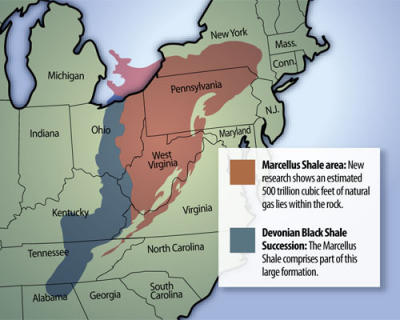ESI In New York State Court Practice
By admin on January 19, 2010
 Are defendants in New York product liability and toxic tort litigation better off in federal court than in state court? Federal court discovery rules certainly are more liberal than state court discovery rules. There, plaintiff’s experts are subject to deposition and, if appropriate, Daubert challenges. In contrast, state court provides only minimal expert disclosure. However, state court rules concerning the production of electronically stored information (“ESI”) may be more favorable to corporate defendants litigating in state court. In state court, the general rule is that the requesting party pays for the defendant’s ESI retrieval. In federal court, the court will apply “proportionality” concepts, and balance the importance of the discovery with the burden on the producing party. Thus, the result of the burden shifting analysis is somewhat more complex and subject to more variables. As reported in this space on November 4, 2009, (“Cost Allocation of E-Discovery in NY Trial Courts”), the Joint Committee on Electronic Discovery, convened by the Association of the Bar of the City of New York, has recommended that the legislature amend the CPLR to address time-consuming ESI disclosure disputes. The new proposed CPLR rule is expected to address a litigant’s duty to preserve ESI in anticipation of litigation; the scope of that duty; and the scope of ESI production.
Are defendants in New York product liability and toxic tort litigation better off in federal court than in state court? Federal court discovery rules certainly are more liberal than state court discovery rules. There, plaintiff’s experts are subject to deposition and, if appropriate, Daubert challenges. In contrast, state court provides only minimal expert disclosure. However, state court rules concerning the production of electronically stored information (“ESI”) may be more favorable to corporate defendants litigating in state court. In state court, the general rule is that the requesting party pays for the defendant’s ESI retrieval. In federal court, the court will apply “proportionality” concepts, and balance the importance of the discovery with the burden on the producing party. Thus, the result of the burden shifting analysis is somewhat more complex and subject to more variables. As reported in this space on November 4, 2009, (“Cost Allocation of E-Discovery in NY Trial Courts”), the Joint Committee on Electronic Discovery, convened by the Association of the Bar of the City of New York, has recommended that the legislature amend the CPLR to address time-consuming ESI disclosure disputes. The new proposed CPLR rule is expected to address a litigant’s duty to preserve ESI in anticipation of litigation; the scope of that duty; and the scope of ESI production.
An article in Kramer Levin’s Electronic Discovery Update (January 2010), “Cost Shifting in New York: Forum Makes All the Difference,” discusses the background of the general presumption in state court that the requesting party pays for the cost of discovery. Although the CPLR does not explicitly apply this presumption to ESI costs, New York state courts have followed this presumption when deciding how to allocate e-discovery costs. In Lipco Elec. Corp. v. ASG Consult. Corp., for example, the court found that “… cost shifting of electronic discovery is not an issue in New York, since the courts have held that, under the CPLR, the party seeking discovery should incur the costs.” Lipco Elec. Corp. v. ASG Consult. Corp., 4 Misc.3d 1019(A), 2004 WL 1949062 (Sup. Ct. Nassau Co. Aug 18, 2004). In contrast to state court practice, the standard under federal jurisprudence is less clear cut. The Hon. Shira Scheindlin (SDNY) has articulated a multi-factored balancing test, which has been influential in guiding determinations of when the cost of producing “inaccessible” data should be shifted to the requesting party. Zubulake v. UBS Warburg LLC, 216 F.R.D. 280 (S.D.N.Y. 2003). The Kramer Levin Update observes that a recent New York trial court opinion declined to apply this federal approach, stating that it was “not empowered – by statute or case law – to overturn the well settled rule in New York state that the party seeking discovery bear the cost incurred in its production.” T.A. Ahern Contractors Corp. v. Dormitory Auth. of the State of N.Y., 2009 WL 806779 (Sup. Ct. N.Y. Co. Mar. 19, 2009). Citing the policy behind the rule, the court observed that the requester-pays standard gives a party “a strong incentive to formulate its discovery requests in a manner as minimally burdensome as possible.” I predict that the differences between state and federal ESI practice will narrow in the near term, possibly with the promulgation of a CPLR rule, and that New York will ultimately adopt a more federal approach modeled on the influential Sedona Conference Working Group template. However, for the present, a New York state court plaintiff runs the risk of incurring substantial costs in demanding burdensome ESI from a corporate defendant. Be careful what you wish for!

 natural gas and oil drilling buried in the DEC’s hazardous spills database. However, it was reported on January 11, 1010 that
natural gas and oil drilling buried in the DEC’s hazardous spills database. However, it was reported on January 11, 1010 that  Environmental groups and proponents of economic development and natural gas exploration are on a collision course of competing economic and environmental interests involving an enormous untapped reservoir of natural gas in the
Environmental groups and proponents of economic development and natural gas exploration are on a collision course of competing economic and environmental interests involving an enormous untapped reservoir of natural gas in the  Michael Hoenig’s Product Liability column in The New York Law Journal, “
Michael Hoenig’s Product Liability column in The New York Law Journal, “ BNA Toxics Law Reporter reported on December 31, 2009, that a Michigan Appeals Court affirmed a mold exposure verdict for $303,260, finding that expert testimony was not necessary under Michigan State law to prove either general causation or specific causation. In
BNA Toxics Law Reporter reported on December 31, 2009, that a Michigan Appeals Court affirmed a mold exposure verdict for $303,260, finding that expert testimony was not necessary under Michigan State law to prove either general causation or specific causation. In  Two electrifying Circuit Court of Appeals cases handed down in 2009 may set the stage for climate change litigation in the years to come. The decisions are Connecticut v. American Electric Power Co., et al., 582 F.3d 309 (2d Cir. 2009) and
Two electrifying Circuit Court of Appeals cases handed down in 2009 may set the stage for climate change litigation in the years to come. The decisions are Connecticut v. American Electric Power Co., et al., 582 F.3d 309 (2d Cir. 2009) and  Over the years, I have become an enormous fan of
Over the years, I have become an enormous fan of  Justice Sotomayor stated:
Justice Sotomayor stated: The
The  BNA Toxics Law Reporter
BNA Toxics Law Reporter